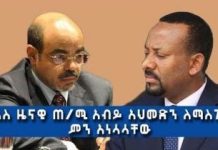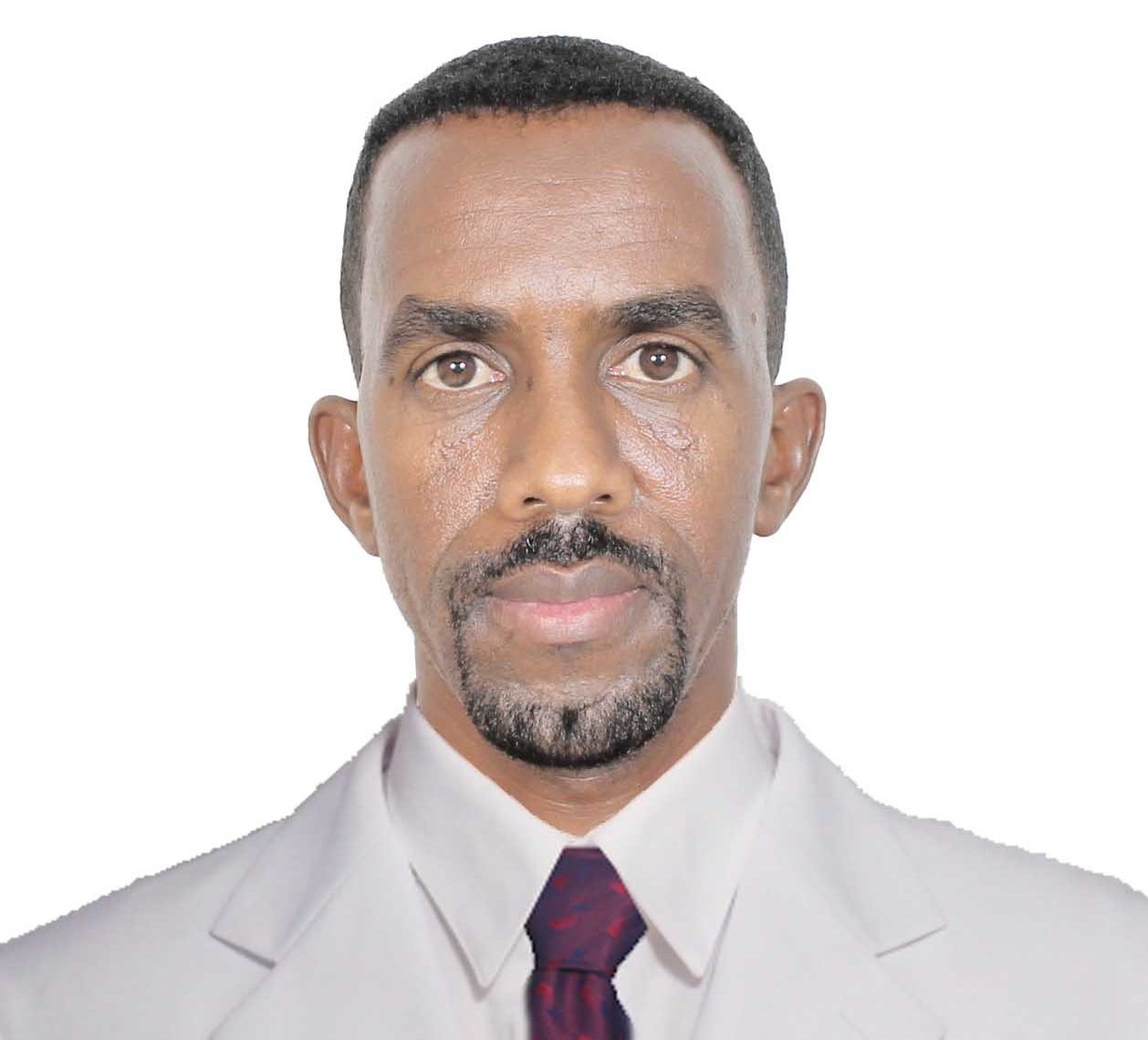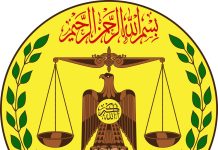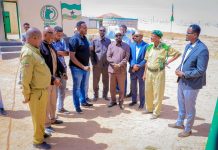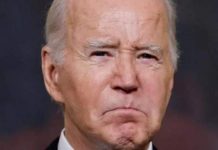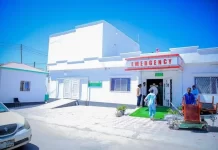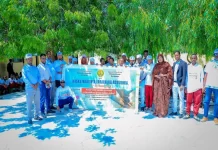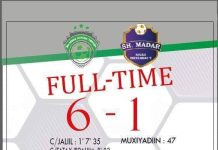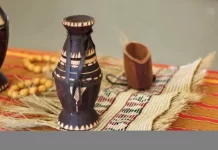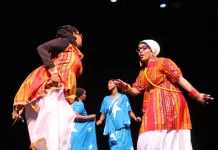Brief history of Somalia after 1991
Many years have passed to restore peace and tranquility in the war-torn state of Somalia, locally and internationally the effort was based on how to pull Somalia out of this chaotic situation. But the intellectuals, traditional leaders, and politicians in South Somalia have been ignoring to trace back the root cause of the collapse and its contemporary consequences, and internally this is one of the major factors contributed to the long-lasting instability nature of Somalia. The international community has been trying to help politicians and clan motivated leaders to sit and meet somewhere out of Somalia and construct an extrinsic form of government which has nothing to do with complete and broad-based reconciliations among Somalis themselves.
As the central government of Somalia had fallen down in 1991, the regional countries and international community focused on bringing Somalis together, and the first conference was held in Djibouti – the Djibouti Accord One. This was June 5, 1991, attended by United Somali Congress (USC), Somali Democratic Movement (SDM), Somali Patriotic Movement (SPM), Somali Salvation Democratic front (SSDF). All southern factions participated in that conference except Somali National Movement (SNM) due to the declaration of the Republic of Somaliland that claims the territorial integrity of British Somaliland before the unification with Somalia in 1960.
The problem and the gap between Somaliland and Somalia started to widen when Djibouti Two was held between 15 and 21 July the same year in which Mr. Ali Mahdi Mohamed was appointed to be the new president of Somalia. This was the exact time in which Southern part of Somalia tightened the rope around the throat of hope, suffocating Somalia to death. All agreed points were baseless to the eyes of those who overthrew the military dictatorship, especially General Aideed who refused to recognize the presidency of Ali Mahdi, and wars started there claiming the lives of civilians, and devastating anything survived during the war in Somalia between the national armed forces of Siyad Barre and the militants. The other interesting thing that happened at that time was the newly emerged warring conflicts of Southern Somali factions and the ignoring of Somaliland point at all.
Many subsequent conferences were held, naming the major ones, The Arta Peace Conference held on 2000, in which Abdiqasim Salad Hassan was elected as a president of TNG. The Transitional National Government (TNG) controlled parts of the Capital city, Mogadishu, while the rest of southern Somali regions fully controlled by different factions. One of the major threats to his administration was Puntland – a region in northeastern Somalia. Surprisingly the Transitional National Government claims to be the only legal government in Somalia including Somaliland, where Southerners still claim to control! After Abdiqasim, Abdillahi Yusuf Ahmed was elected as the president of Somalia (the Transitional Federal Government) from 2004 to 2008.
Even though the course of contemporary Somali history is huge enough, to sum up here in this paper, as Abdillahi Yusuf Ahmed came, Somalia underwent a new system – the federalism, which has its dynamic nature that marked Somaliland as a member state of Federal Democratic Government of Somalia, a bare claim far from the ground reality. During his administration, a vital force emerged, which had been existing as hibernating reptile, taking different shapes throughout the chaotic era, the Islamic courts Union – a group of Islamic Sharia courts united among themselves to build antagonistic administration to the Transitional Federal Government of Somalia, these joint Islamic courts was led by Sharif Shiekh Ahmed.
The Islamic Counts Union (ICU) controlled most of southern Somalia and the majority of Somali population welcomed with open hearts simply because of getting hope in their emergence. The courts restored social stability in the major cities of Southern Somalia.
When Abdillahi Yusuf Ahmed was elected as the president of Transitional Federal Government of Somalia by the parliament in exile, he was unable to move to Mogadishu, because of the Islamic courts. And eventually, his administration moved to Baidoa (capital of southwestern Bay region of Somalia) in 2005 as temporary headquarter for the Transitional Federal Government (TFG). The Islamic Courts Union waged war against TFG, and in December 2006, they lost most of the territory under their control after the defeat at Baidoa and Baladweyne. The courts withdrew Mogadishu and moved to Kismayo. The hidden agendas and opposing ideologies under the big coat of Islamic Courts Union came out after their disintegration into hostile factions like Al-Shabab which eventually forced neighboring countries to send their troops to fight against them and help TFG survive. Al-shabab was also marked as a potential threat to the stability of the Horn of Africa, jeopardizing the regional security network.
Despite the warring conflicts in Somalia, the international community has been involving to finalize the chaotic situation in this country. The disintegration of Islamic Courts Union produced the aggressive element of Al-shabab that promised allegiance to Al-Qaeda. This organization has their own phase in Somali history, but the Islamic Courts Union head, Sharif Sheikh Ahmed was elected January 2009 as a president of Transitional Federal Government in Djibouti.
His administration struggled against those insurgents, though little advancement was achieved. On the other hand, the formation of Federal constitution and creation of some regional states under the federal government had taken place in his time. Another interesting thing happened at the first time in modern history of Somalia and Somaliland – the political dialogues, which included the political agenda of the opposition party (Kulmiye) and when defeated the ruling party (UDUB) in the presidential election in Somaliland in 2010, the dialogues were put forward.
On 10 September 2012, Somali parliament elected Hassan Sheikh Mohamud as the president of Somalia. This man should carry out most of the assignments ahead of him, including fighting against the insurgents and continuing the political dialogue with Somaliland. Somalia as a devastated state, which is mostly affected by clan-based disputes couldn’t solve many of its problems. The country immersed into a deep coma, where rules and regulations remained a matter of verbal expressions. In spite, Somali clans are politically conflicting, the fundamentalist insurgents put a big scar on the national hope. Different wars are fought there with different objectives, the neighboring front line countries sent their troops to fight against Al-shabab and to get the position of political influence in Somalia because their security had been threatened.
Hassan Sheikh Mohamud’s tenure lasted with little progress. And the most interesting time of Mr. Farjamo arrived!
The international community are still there doing something in Somalia and trying to clean the dirty politics in the ground – but Somalis are seeking stability from the hands of imaginary aliens – this means, what had gone wrong has never been questioned. By the way, this has no single reason to justify the wasted efforts, financial aids, and blood. That is why stability is sought somewhere in the middle of nowhere!
In the election of 2017, about 20 candidates for the presidency including Mohamed Abdillahi Farmaajo were registered. Even though he lost in the 2012 elections, this time he brought new strategy. He figured out how Somali sentimentality could be used, so Farmaajo based his campaign on Somali Nationalism – a disease in the hearts of south Somalis, where they still believe there is hope of restoring Great Somalia. The other elements in his campaign included fight and defeat of the Islamic militants of Al-Shabab and helping Somalia out of famine. The problems of Al-Shabab and famine have been present at the time of the election, but the most important element who made him president was his ignition of nationalism, where he openly campaigned that he will force AMISON troops out of Somalia as he is elected, insisting that there is no room for the troops of neighboring countries namely Ethiopia and Kenya believing they are long-standing enemies of his nation. This could be his own political vision and egocentric nature of his personality to bring great Somalia back under his administration! Or maybe he was simply engaged it to win. Anyhow, his arrival is a sign of emerging trends of phobia to the neighboring countries, and he feels proud when southerners call him “Madaxwaynaha umadda Soomaaliyeed” “The President of Somali People. Keep in mind, still, south Somalis believe that the international borders between Somalia and neighboring countries as false and legally none-existing boundaries.
Somaliland as an independent entity:
In contrast, there is somewhat different in Somaliland, the political sphere is mainly handled by intrinsic mechanisms.
It could both be an unfair and interesting thing in the side of Somaliland story. It is unfair because Somaliland struggle in its state-building processes was not given value and the people of Somaliland remained hostages for Somalia. After declaring independence, self-helped conferences were held. The Barbara and Buroa meetings were aimed to have reconciliation among Somaliland people in 1991. On May 18, 1991, Somaliland declared separation from other parts of Somalia where Abdirahman Ahmed Ali was elected as the first president. That decision could have positive and negative sides in Somaliland history. When saying this, I mean it has its positive side because the reconciliation and peacemaking schemes among Somaliland clans anchored the long lasting stability of the country. The Borama conference brought new face as a leader into Somaliland politics – not new to the entire political system, but outside the Somali National Movement prominent leaders – Mohamed Ibrahim Egal.
The negative side could be, the unilateral decision without alternative plans. If separation was plan A, there should be plan B which could set pre-conditions, for instance, if there will be no final reconciliation in the south, Somaliland independence will be mandatory with a specified period of time! In the long run, while there was no stability in the south, Somaliland failed to have a friend of interest that could help it get some access into the international arena. Somaliland government used to refuse any conference held for South Somalia, and this has had masked Somaliland under the statehood of oneness (Somalia). This was mainly due to the Somaliland people who were not in a position to deal with such politics, and leaders have no heart to do so – this has something to do with sentimentality of Somali people in general – that feeling has been fading away until the course of the river has been changed by Kulmiye Party when political dialogues with Somalia was officially opened.
The creation of Guurti (upper chamber house of parliament) with their considerable power elected Mr. Mohamed Ibrahim Egal in the meeting which was held in Borama in 1993. The Egal’s administration faced obstacles inherited by the collapsed system and armed militia under the name of SNM, but he succeeded to carry on state building procedures and the formation of national forces, police, and other governmental institutions. The Self-declared Republic of Somaliland detached itself from the critical conditions in South Somalia. And that period can be referred as “busy on one’s own self”.
The nationalism by which Mr. Farmaajo used during his campaign as a tool, had already been dead in Somaliland context when Mohammed Ibrahim Egal had taken the responsibility of experienced politician, respecting international borders. That time, the horn of African region was crawling out of the consequences of wars such as Ethiopia, Somaliland, though Somalia had internally been in conflicts.
From independence, Somaliland achieved major political and developmental issues. The referendum on the constitution, establishment of political parties, democratic presidential and representative elections at national and local levels, extending governmental institutions almost every region of the country, security, and ability to extend collaboration with the neighboring countries are one of the remarkable achievements.
Diplomatically, Somaliland lagged behind because there were no adequate measures towards engaging openness to express self and ask what it deserves. But there were undeniable barriers such as the doctrine of African Union (AU) which is based on keeping colonial boundaries as sacrosanct. Though this belief was not as sacrosanct and untouchable as stated when looked at the case of South Sudan, which is out of even none existing colonial boundaries, it is a breakaway from the mother state, Sudan. The worries about Somaliland case in the eyes of AU was that it could lead other parts of Somalia to follow its style particularly Puntland. Puntland was created to “watch and wait” Somaliland fate and that was the main reason behind its creation when you deeply observe its structural style!
Despite the democratic triumphs of Somaliland, there is no willingness to value it. The pre-requisite conditions are met according to the Montevideo Convention on December 26, 1933. The convention specified four elements that states should possess:
- A) A defined territorial boundary B) a permanent population C) a government D) and ability to enter into relations with other states. These four pre-requisite elements are possessed by Somaliland which only keeps it as a “de facto state”.
During the tenure of President Dahir Rayale Kaahin, his administration tried to draw the attention of African countries on Somaliland case by submitting an application of Somaliland for the membership of AU, and in the year 2005, an AU fact-finding mission visited the country. In their report, they stated that Somaliland has a “unique and self-satisfied in African political history”. But the matter remained a simple visit without action due to their fear of fragmentation in Somalia – Puntland was actively observing the case, and because Mogadishu was in a deep coma! No one in the international community could be blamed responsible, and African Union (AU) may have reasonable justification. But one thing is missing, the effort expected to pay by the Somaliland leaders. Remember internationally, states consider interests, interest-based-politics.
Somaliland has a strong relationship with the neighboring country, Ethiopia where the two countries exchanged diplomatic missions. This happens because Somaliland and Ethiopia share a vast boundary which needs mutual security network, and this is only possible by engaging friendship strategy. Ethiopia is a land-locked with growing economies, and for that reason, Barbara port in Somaliland serves importation and exportation means. Another remarkable thing is the deal between Somaliland and DP world to extend the capacity of Barbara port, and from that angle, Ethiopia got 19% stake in Barbara deal, which will have its economic significance in both countries while strengthening the existing bilateral relationship. The 19% stake of Ethiopia is a means of making Barbara port competent to the established ports in the region.
The political dialogues between Somaliland and Somalia:
When Kulmiye party won the presidential elections of Somaliland in 2010, political dialogues were officially engaged by Somaliland and Somalia. London, UAE, and Turkey communique had taken place without significant outcomes. And all agreed points were mainly violated by Somalia which really lacks central entity responsible for keeping agreements on the standard. And in many cases, those political talks could be referred as premature.
The current president of Somalia, Mr. Farmaajo is acting against all standards of responsibility by trying to put diplomatic pressures on Somaliland which could only worsen the situation. For instance his attempts to stop the extension of Barbara port by DP and the military base in which UAE will have in Somaliland. His claims are barely based on the international assumption regarding Somalia as ONE! Which is totally different from the ground reality where he cannot enter a deal about Barbara with any other state because that deal will never operate in Somaliland.
The 1960 Union
Briefly discussed the current and contemporary issues of Somaliland and Somalia, it is the time to question what went wrong?
Even though I am going to deal with the legal aspect of the union in 1960 here due to a shortage of space, it is obvious that unfair outcomes of that union resulted in the long-lasting crises in Somalia. South as “unstable failed state” and in the case of Somaliland, the result is “hostage and victim of south conflicts” up to now. The de facto union produced a sense of inequality and lack of balance between the united parts. The union provided the south with the capital, president, prime minister and everything with high value. The dictatorship era worsened the case, and tribal conflicts aroused, the hope was killed by the civil wars with high causalities.
The union lasted within 30 years’ time, and the separation is almost close to three decades. When the tenure of Mr.Farmaajo finishes it will equalize the years of union and the years of separation. So there will be no need to live in the history.
The problem will only last if a true leader from the south witnesses the huge difference between Somaliland and Somalia. Otherwise, it is must to have big clashes again which could turn off the dim light of hope in the region. The request of withdrawal of weapon’s sanction from Somalia without proper monitoring of international community will finalize the weapon in the hands of tribes and insurgents and the region will start burning again in the hell. Or Somaliland should get its stake of weapons to secure their territory.

